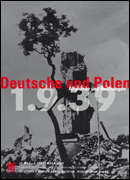


Exhibition | Oppression and Self-assertion | War and Occupation | Conflicts and Rapprochements
The Partitions of Poland
| Struggle for Freedom and Enthusiasm for Poland
Intensification of the "Germanization policy"
| World War One and the Reconstitution of Poland
Border Conflicts and Demonization
| A Calculated Rapprochement
In the 18th century, the Polish-Lithuanian Republic was one of the largest countries in Europe. However, internal conflicts weakened Poland to the point that Prussia, Austria and Russia were able to swallow up about one third of Polish territory in 1772.
This loss gave rise to a strong reform movement in Poland and, on 3 May 1791, the Polish parliament adopted Europe's first written constitution.
Prussia and Russia perceived the Polish constitution as a threat to their absolutist form of government, and the two countries combined to partition Poland a second time in 1793. Once the Polish nationalist resistance movement was stamped out in 1795, all of Poland was divided up among Prussia, Austria and Russia.
Polish volunteers fought at Napoleon's side in 1797 and afterwards in the hope that France would support the re-establishment of an independent Poland, but Napoleon's defeat put an end to Poland's hopes: at the Congress of Vienna in 1815, Poland was once again partitioned among Prussia, Austria and Russia.
